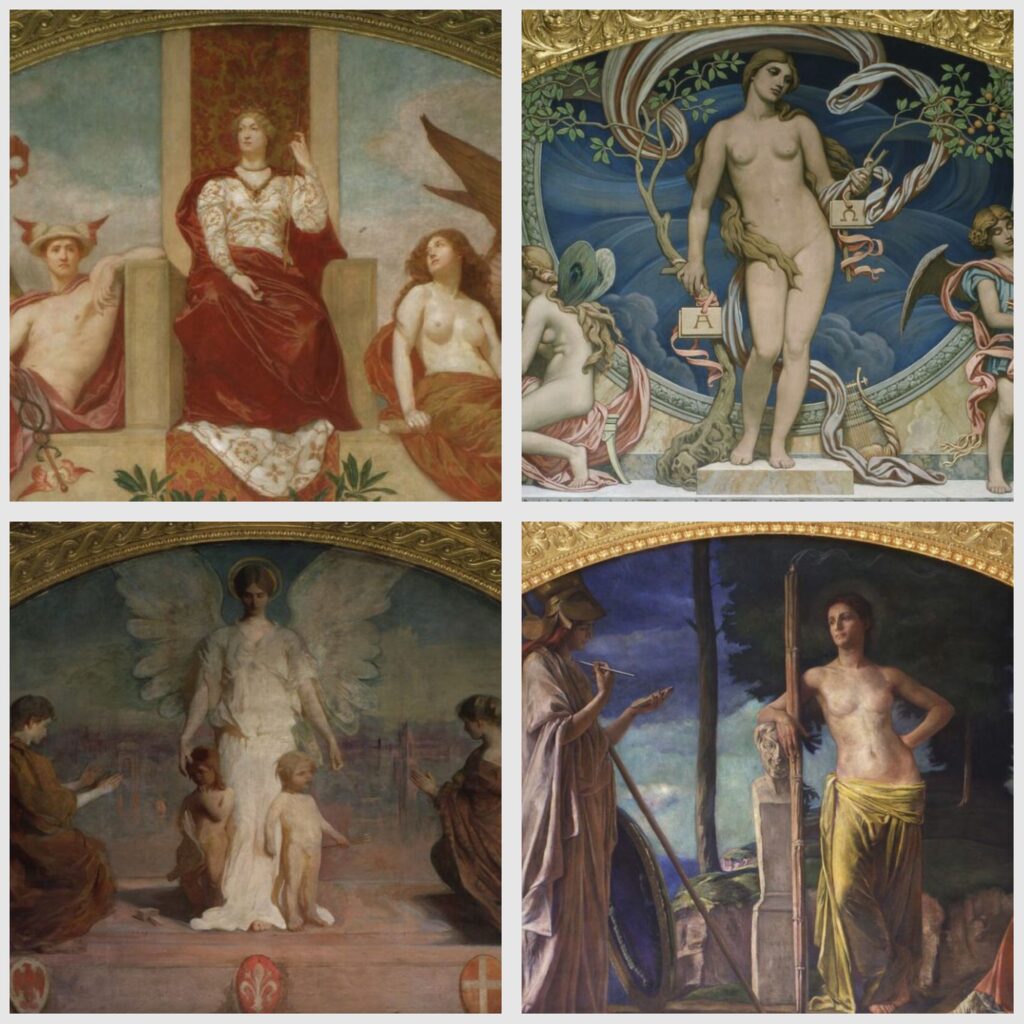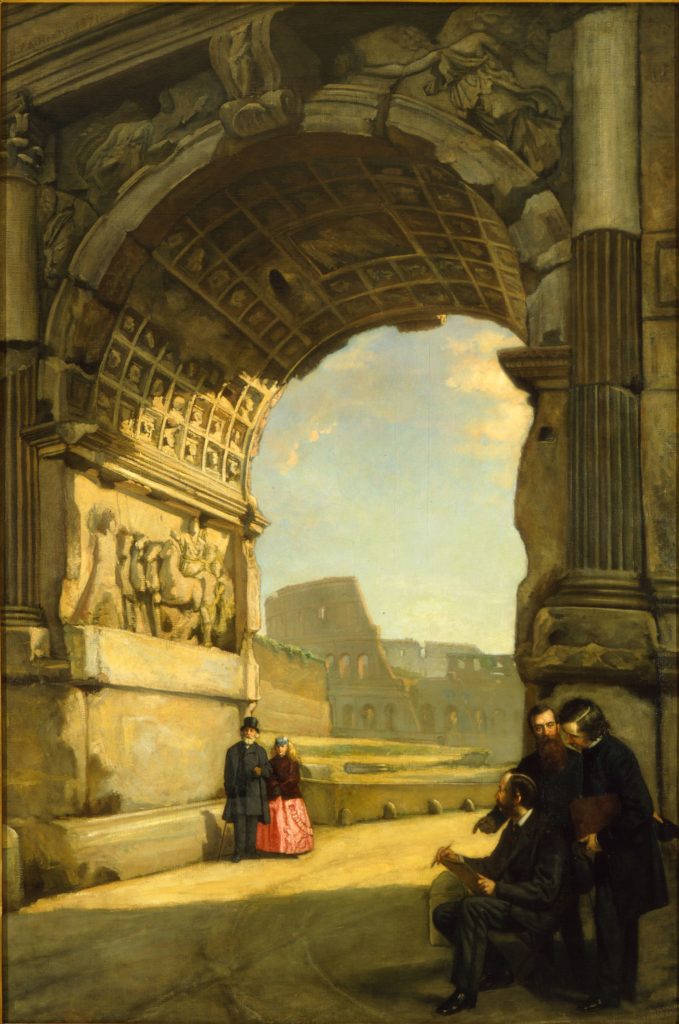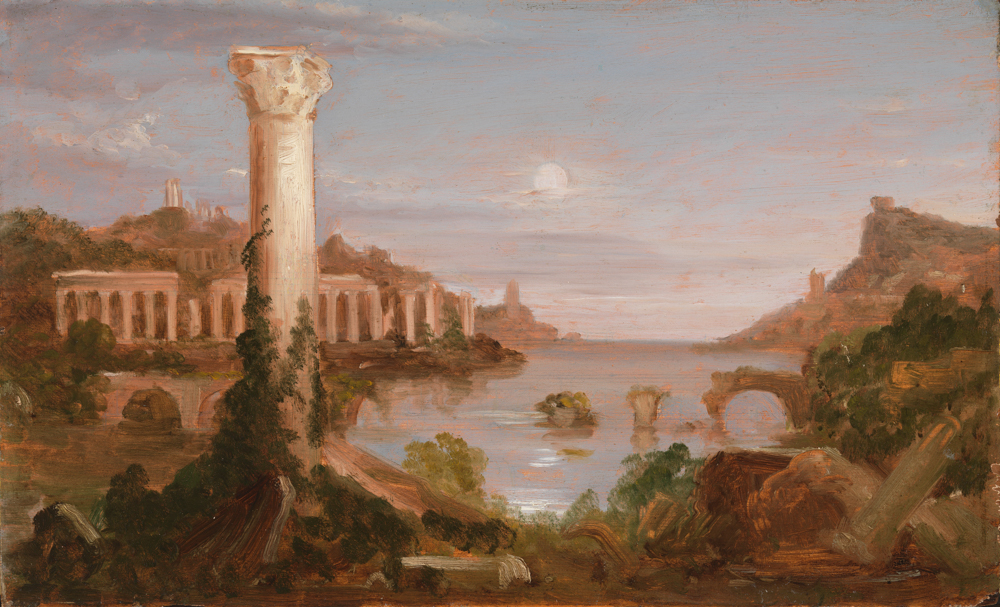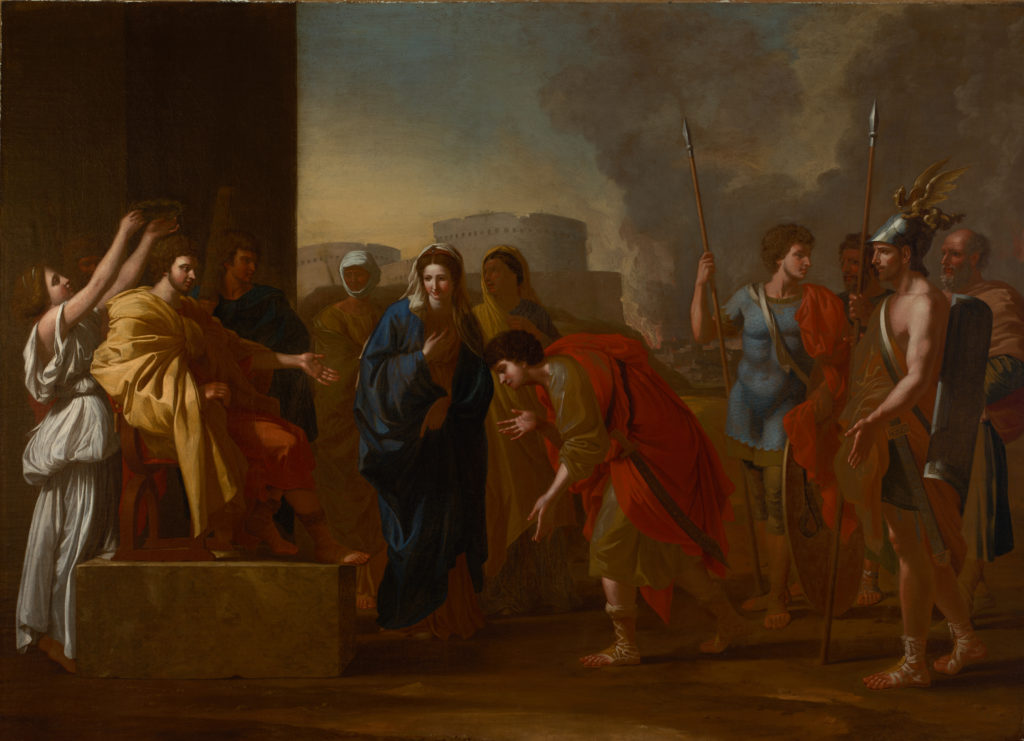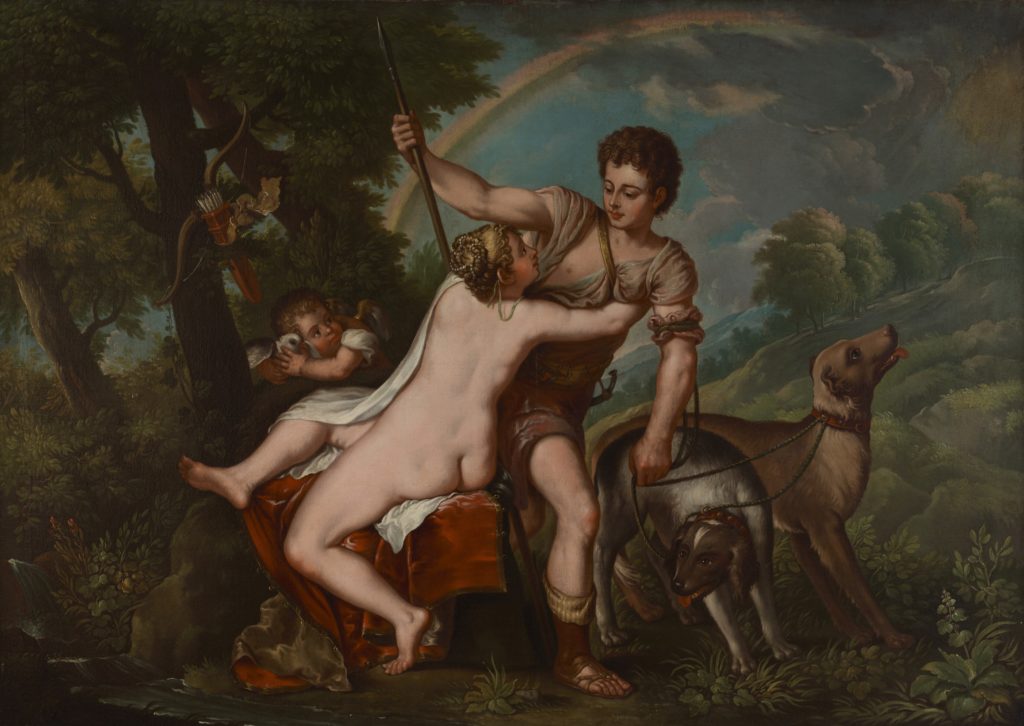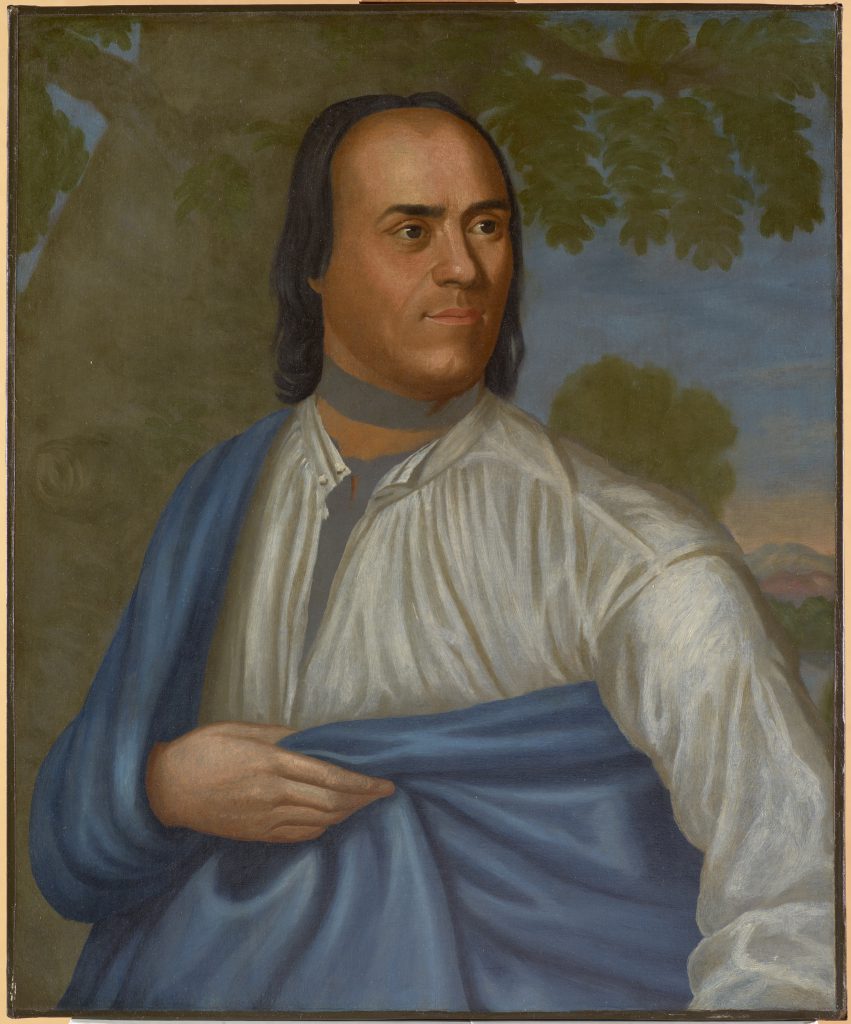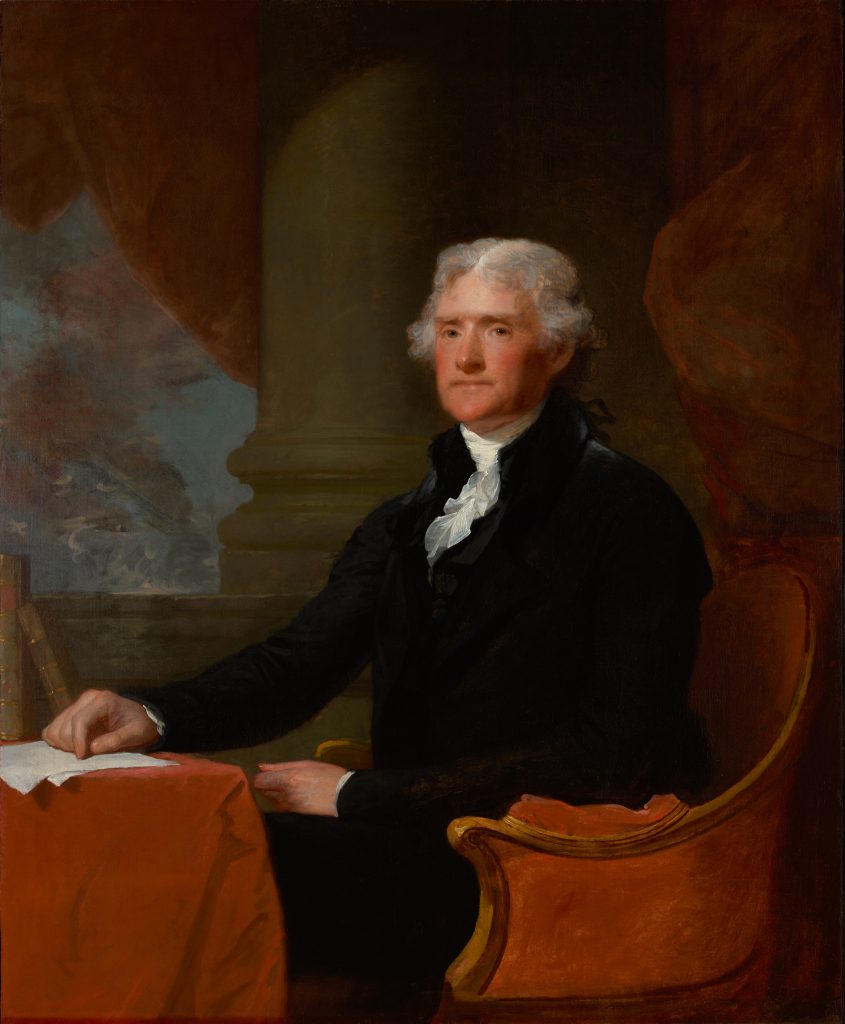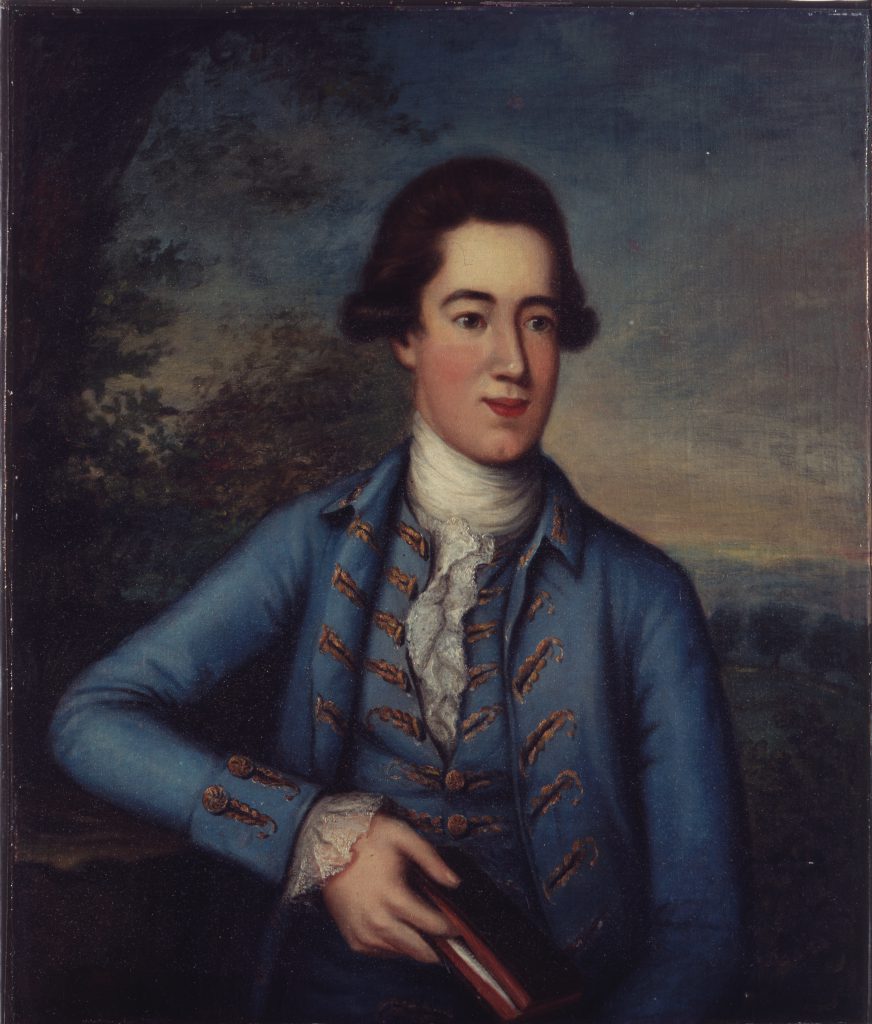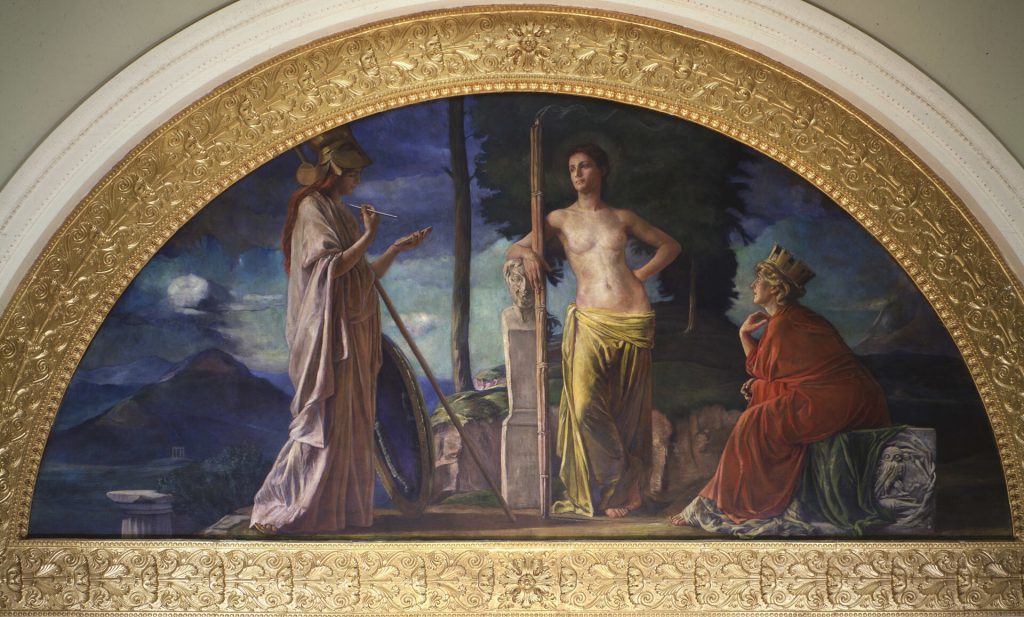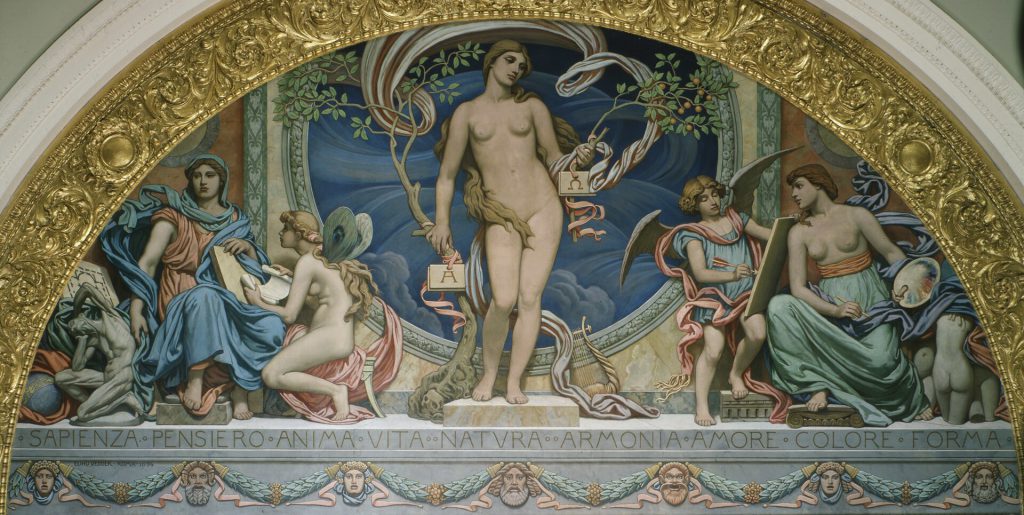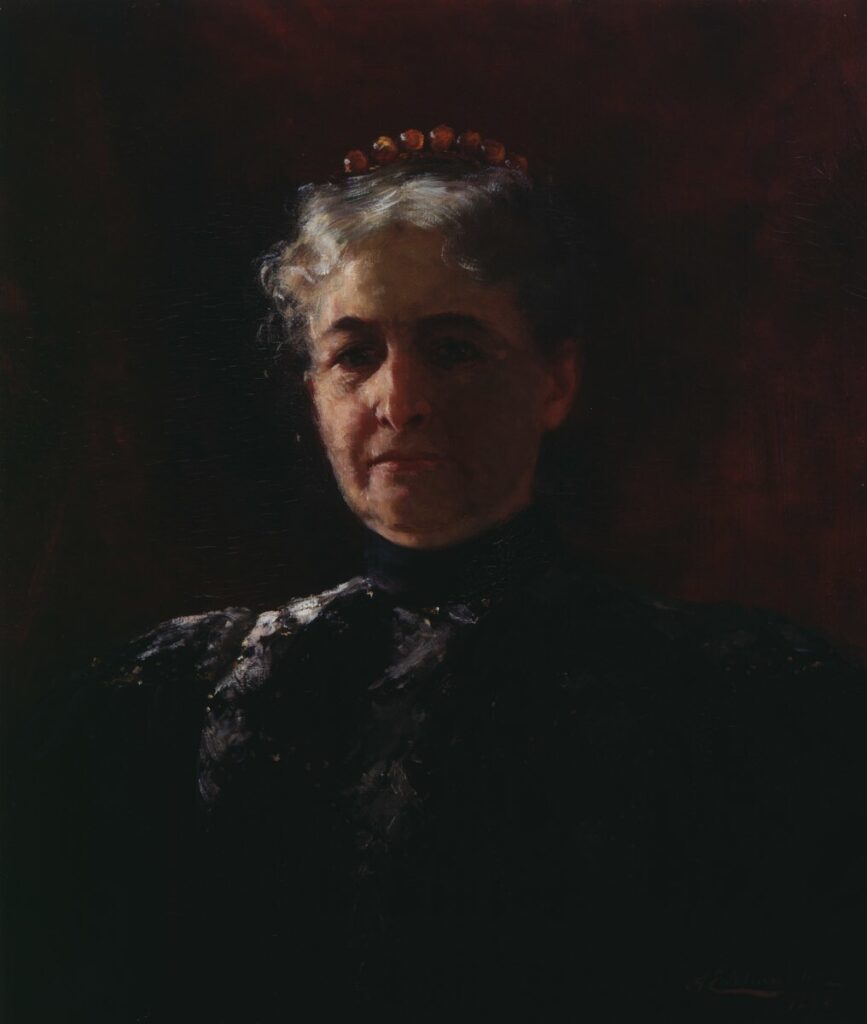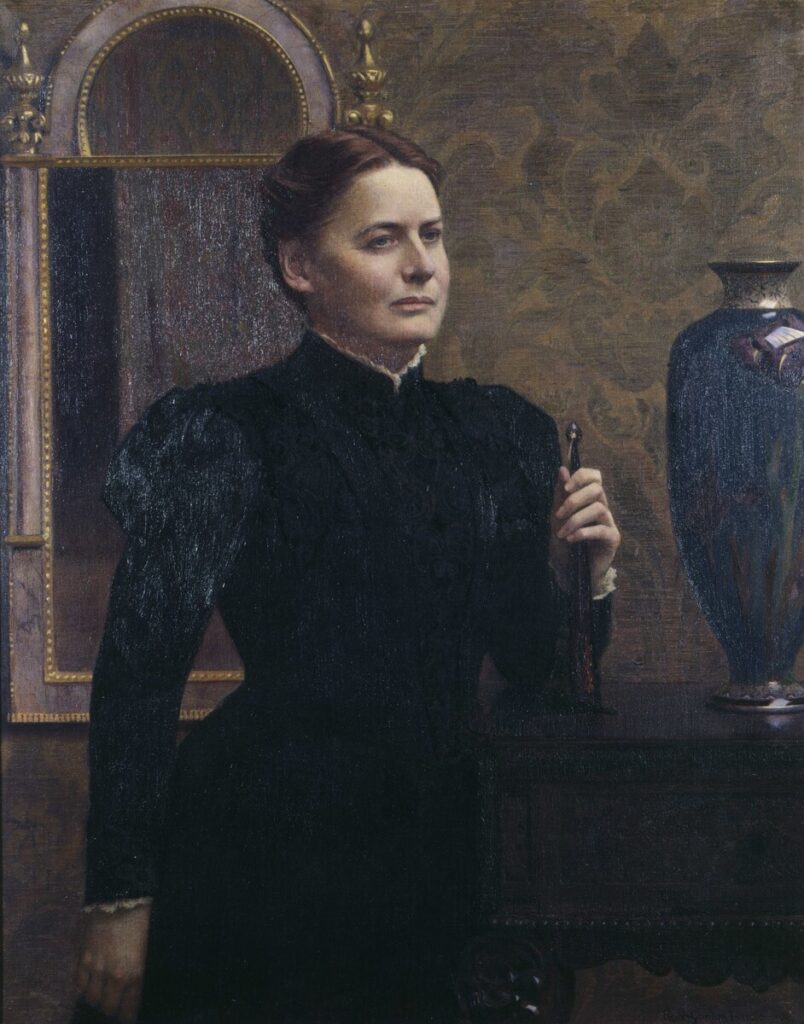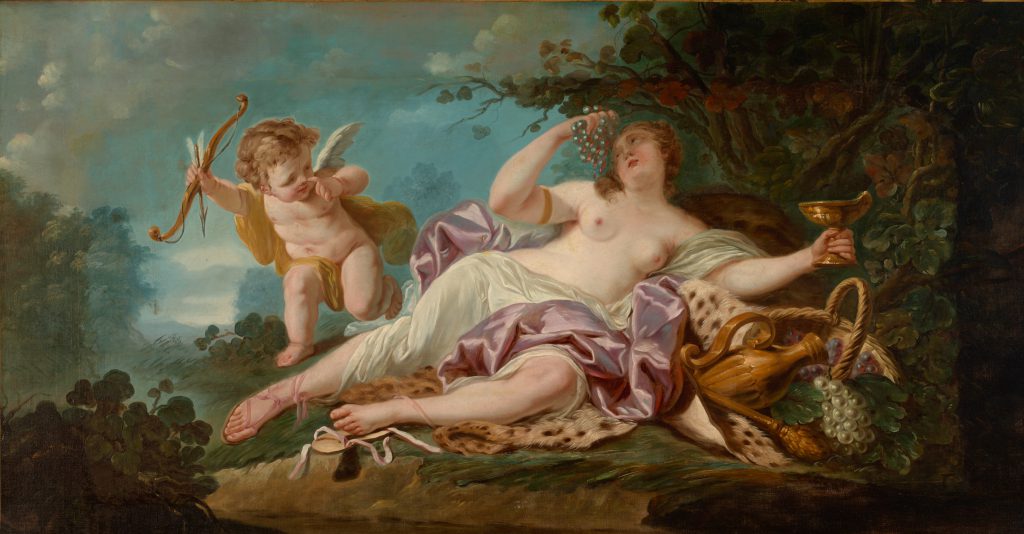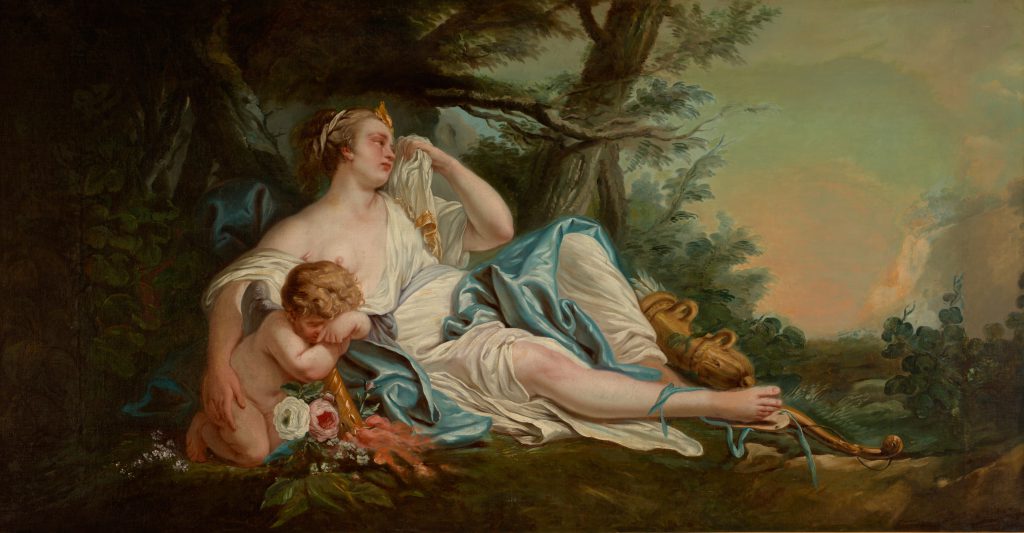Sunset, View of Vesuvius and the Bay of Naples
Bequest of Joseph Edward Merrill, Class of 1854
1909.1George Loring Brown, a Boston born landscape painter, spent the formative years of his career in Italy where he painted views for the booming tourist market—especially for fellow Americans. This panoramic view depicts the Bay of Naples as seen from Virgil’s tomb, a Roman cinerarium and a familiar pilgrimage site since the Renaissance. Brown’s expansive painting encompasses an impressive array of subject matter, combining the modern city of Naples (left) with ancient ruins, including Virgil’s tomb, in the foreground. At the rear, looming over all, is a smoldering Mount Vesuvius, a reminder of the eruption that served as signal event of Roman antiquity representing the precarious balance of human industry and nature.
Brown’s painting takes significant liberties with the perspective, forming a composite landscape based on sketches done on-site as well as popular etchings of the bay. Though they bear some similarity to nearby Medieval ruins, the ruins to the composition’s right are largely an invention, a convenient framing device that allowed Brown to juxtapose antiquity and modernity in the same frame. The setting sun introduces a note of melancholy, not unlike Thomas Cole’s (1801–1848) The Course of Empire, which similarly used the crumbling remains of Mediterranean antiquity as a metaphor for the trials and tribulations of human experience. The environs were also romanticized; contemporary visitors to Naples and the site of Virgil’s tomb often describe with disappointment the intrusion of modernity and fellow humans on the ancient landscape absent in Brown’s painting.
Brown’s Italian landscapes—including scenes of Rome, Florence, Venice and, here, Naples—were popular among contemporary American collectors who comprised his primary clientele both at home and abroad. His studio in Rome became one of the most important stops for American travelers, including author Nathaniel Hawthorne (1804–1864), Class of 1825, who wrote about his visit with Brown in 1858, noting that Brown’s “Yankee idioms” and “lack of grace” signaled an artist “quite unpolished by his many years residence in Italy.” Despite this rather unflattering depiction, Hawthorne wrote admiringly of Brown’s works and the particular quality of light captured within.
During two decades in Italy and following his return to America during the Civil War, Brown completed nearly two dozen paintings depicting various scenes in and around Naples. Ongoing archaeological excavation at nearby Pompeii and Herculaneum, both buried by the eruption of Vesuvius, had raised the profile of the area, making Naples a prime stop for tourists during the eighteenth and nineteenth centuries. Of Brown’s surviving paintings, the Bowdoin example is one of only two that depict panoramic vistas of the Bay of Naples. Brown, like many of his contemporaries, returned to the United States on the eve of the Civil War. There he continued to paint Italian views such as this one, using sketches and watercolors done during his years abroad. While he also branched out into landscapes of rural New England with some success, his Italianate scenes remained his most recognized and desirable works.

